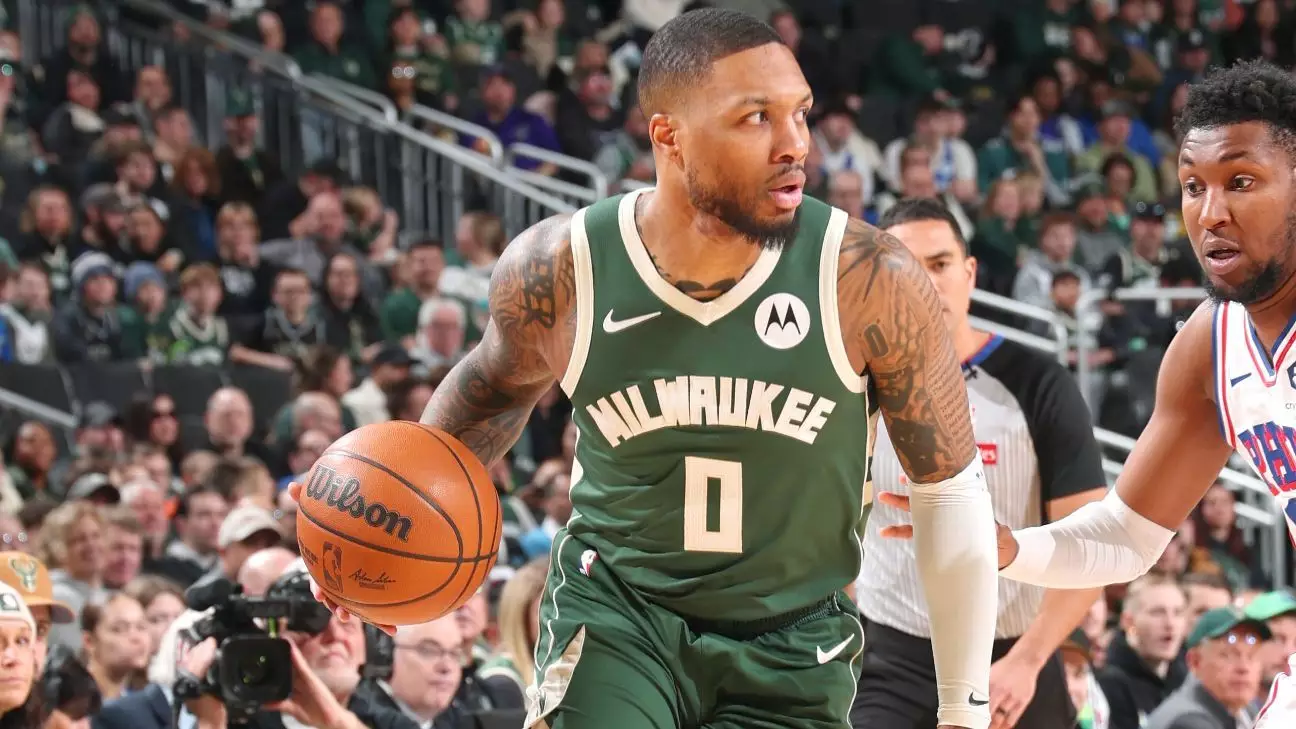The landscape of the NBA has always been unpredictable, with injuries and setbacks testing the depth and resilience of teams across the league. The Milwaukee Bucks currently find themselves amidst a significant challenge due to the absence of their star guard, Damian Lillard, who has been diagnosed with deep vein thrombosis in his right calf. This condition not only raises alarms in the sports community but also poses serious implications for Lillard’s overall health and career longevity. The significance of a blood clot cannot be understated; both for Lillard and the franchise, it presents a complex challenge that reads deeper than the game itself.
With Lillard’s diagnosis confirmed, the urgency for the team to adapt is immediate. Coach Doc Rivers articulated the emotional strain of this situation, highlighting not just the tactical impact on the court but the psychological support needed for Lillard himself. Recognizing the human side of sports, Rivers stated, “Today and right now, it’s all about Dame.” This emphasis on the player’s emotional well-being exemplifies a shift in modern coaching philosophies, where the mental health of athletes is prioritized alongside their physical condition. The reality that Lillard, ranked 10th in assists and 11th in scoring at the time of his injury, is sidelined brings into focus the magnitude of this loss for the Bucks as they attempt to navigate a season that may hinge on their adaptability.
Team Dynamics: A Collective Effort
In response to this adversity, Rivers has called on a collective effort from the roster to fill the void left by Lillard’s absence. This approach is reminiscent of sports teams that thrive on synergy and unison in tough times. The acknowledgment that it will take a “committee” to replace Lillard’s offensive output is a candid admission of the challenge ahead. It’s prudent to note that no single player can replicate what Lillard brings to the floor. Instead, the Bucks will need to rely on a multitude of role players, such as Ryan Rollins and Kevin Porter Jr., stepping up to share the load.
While some might view this as an insurmountable hurdle, history has shown us that teams can rally in the face of adversity. The Bucks must now focus not only on replacement strategies but also on enhancing their defensive and offensive dynamics to compensate for Lillard’s absence. By leveraging different styles of play and encouraging active participation from bench players, Milwaukee could potentially turn this setback into an opportunity for growth and development.
Long-Term Implications for Health and Performance
The concern surrounding Lillard’s health parallels the struggles of other players in the league facing similar medical conditions, like the San Antonio Spurs’ Victor Wembanyama. Such parallel experiences echo the collective anxiety about the long-term implications of deep vein thrombosis on an athlete’s career. The response from medical professionals is critical, and Rivers’ trust in his medical team highlights the importance of comprehensive care and transparency in athlete health management. Lillard’s journey back to the court will undoubtedly influence not just his future performance but could reshape the Bucks’ strategic roadmap for the rest of the season.
In the unpredictable world of professional sports, situations like these serve as sobering reminders of the fragility inherent in athletic careers. Lillard’s condition and the ripple effects on the Bucks’ season signify that while skills and statistics matter, human beings with real health challenges are at the heart of the game. The support and recovery processes surrounding athletes often play a more significant role than fans may realize.
Playoff Aspirations Amidst Uncertainty
As the Bucks navigate this challenging period, the focus naturally shifts to their playoff aspirations. Currently, Milwaukee finds itself in a precarious position in the Eastern Conference standings, having just lost to the Denver Nuggets, placing them sixth in a highly competitive race for playoff positioning. The stakes are high, and the absence of a star player can create a vacuum where previous advantages are rendered moot.
As they face rivals like the Detroit Pistons and the Indiana Pacers, every game counts. Rivers’ confidence in his team is evident; however, the urgency to secure a strong playoff seeding becomes paramount. It’s in these critical moments that the resolve of a team is tested. Will the Bucks emerge from this adversity stronger, or will this injury derail their championship ambitions? Only time will tell, but the resilience and unity they display in the coming weeks will define their trajectory as the regular season draws to a close.

